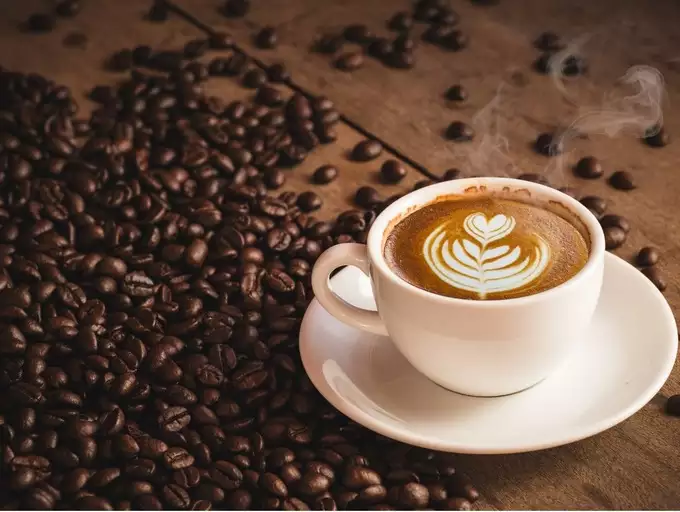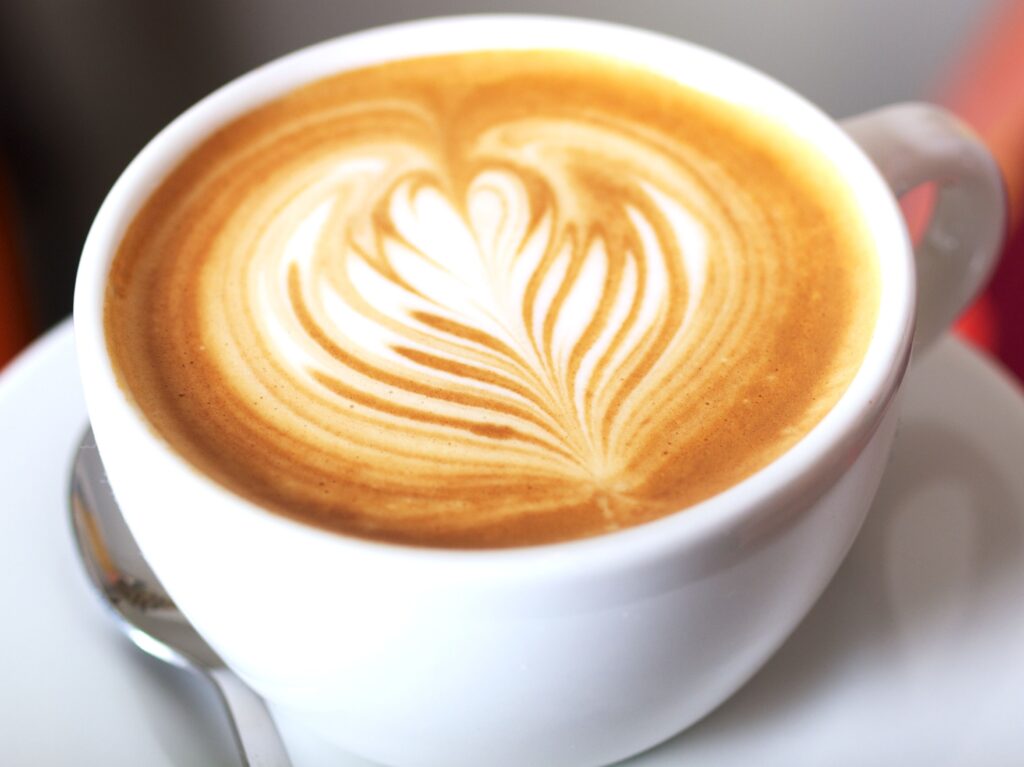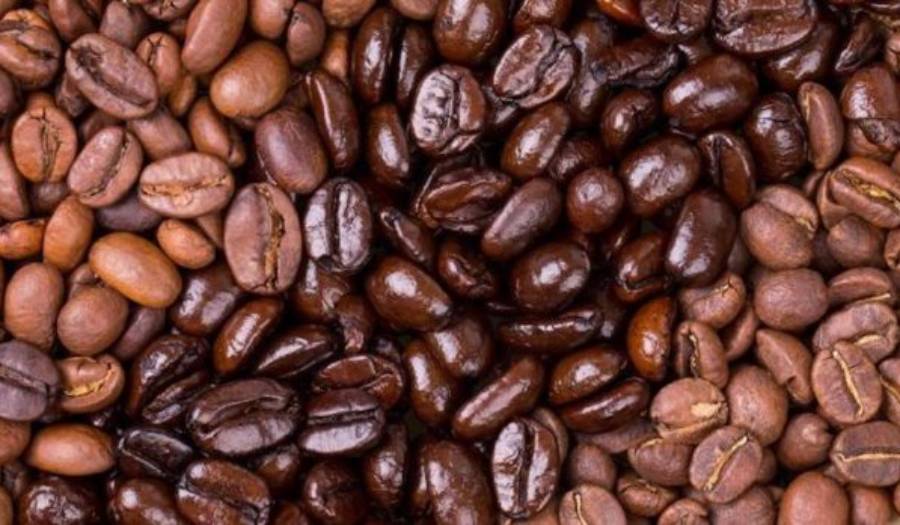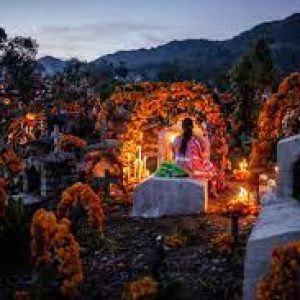
If you enjoy coffee, you will not want to miss this blog. The World’s Best Coffee – Its History And Richness is a blog dedicated to the richness of your favourite natural blended coffee. ‘GOOD IDEAS START WITH BRAINSTORMING,’ as the saying goes. GREAT IDEAS BEGIN WITH A CUP OF COFFEE.”
The Origins of Coffee
Although many traditions exist about how and when coffee was discovered, no one knows for certain where the art of mixing coffee and consuming that amazing foreign coffee originated. So, while sipping a steaming hot cup of coffee, let us browse, look, and consider what we have.
Ethiopian Folklore
Goats Coffee grown around the world can be traced back centuries to the Ethiopian plateau’s ancient coffee forests. Legend has it that the goat herder Kaldi was the first to recognise the potential of these beloved beans there.
According to legend, Kaldi discovered coffee after noticing that his goats became so energetic after eating the berries from a particular tree that they refused to sleep at night.
Kaldi informed the local monastery’s abbot, who made a drink from the berries and discovered that it kept him awake during the long hours of evening prayer. The abbot informed the other monks at the monastery about his discovery, and word of the energising berries spread quickly.
As word spread east and coffee reached the Arabian Peninsula, it embarked on a journey that would eventually take these beans around the world.
The Peninsula of Arabia
The Arabian Peninsula was the birthplace of coffee cultivation and trade. Coffee was grown in the Yemeni district of Arabia by the 15th century, and it was known in Persia, Egypt, Syria, and Turkey by the 16th century.
Coffee was consumed not only at home but also in the numerous public coffee shops, known as qahveh khaneh, that began to sprout up in cities across the Near East. The coffee houses were unrivalled in popularity, and people frequented them for a variety of social activities.
Customers not only drank coffee and conversed, but also listened to music, watched performers, played chess, and kept up with current events. Coffee houses became such a vital hub for information exchange that they were dubbed “Schools of the Wise” after a short time.
With thousands of pilgrims from all over the world visiting the holy city of Mecca each year, word of this “Araby wine” began to spread.
Coffee Arrives in Europe
Travellers from Europe returned from the Near East with tales of an unusual dark black beverage. Coffee had made its way to Europe by the 17th century and was quickly gaining popularity across the continent.
Some people viewed this new beverage with suspicion or fear, referring to it as Satan’s “bitter invention.” When coffee arrived in Venice in 1615, the local clergy condemned it. The debate became so heated that Pope Clement VIII was summoned to intervene. Before making a decision, he decided to try the drink for himself, and he found it to be so delicious that he gave it papal approval.
Despite the controversy, coffee houses grew in popularity as social gathering places and communication hubs in major cities across England, Austria, France, Germany, and Holland. In England, “penny universities” sprang up, so named because a cup of coffee and stimulating conversation could be purchased for a penny.
Coffee began to take the place of the popular breakfast beverages of the time, such as beer and wine. Those who drank coffee instead of alcohol started the day alert and energised, and the quality of their work improved dramatically. (We like to think of it as the forerunner to today’s office coffee service.
There were over 300 coffee houses in London by the mid-seventeenth century, many of which attracted like-minded patrons such as merchants, shippers, brokers, and artists.
These specialised coffee shops spawned a slew of new businesses. The Edward Lloyd’s Coffee House, for example, was the birthplace of Lloyd’s of London.

The Brand-New World For Coffee
Coffee arrived in New Amsterdam, later renamed New York by the British, in the mid-1600s.
Despite the rapid emergence of coffee houses, tea remained the preferred beverage in the New World until 1773, when colonists revolted against King George III’s heavy tax on tea. The Boston Tea Party revolutionised the way Americans drank coffee for the rest of their lives.
“Coffee is the civilised world’s favourite beverage.” – Jefferson, Thomas
Plantations Across the Globe
Coffee cultivation outside of Arabia became increasingly competitive as demand for the beverage grew.
In the latter half of the 17th century, the Dutch were finally able to obtain seedlings. Their first attempts to plant them in India were unsuccessful, but they were successful in Batavia, on the Indonesian island of Java.
The plants grew quickly, and the Dutch soon had a thriving coffee trade. The cultivation of coffee trees was then expanded to the islands of Sumatra and Celebes.
Coffee Comes to America
In 1714, the Mayor of Amsterdam gave King Louis XIV of France a young coffee plant as a gift. It was ordered by the King to be planted in Paris’ Royal Botanical Garden. Gabriel de Clieu, a young naval officer, obtained a seedling from the King’s plant in 1723. Despite a difficult voyage that included bad weather, a saboteur who tried to destroy the seedling, and a pirate attack, he was able to safely transport it to Martinique.
The seedling not only thrived once planted but is also credited with the spread of over 18 million coffee trees on Martinique over the next 50 years. Even more incredible, this seedling was the progenitor of all coffee trees in the Caribbean, South America, and Central America.
Francisco de Mello Palheta, who was sent by the emperor to French Guiana to obtain world’s best coffee seedlings, is responsible for the famed Brazilian coffee. The French were unwilling to share, but the French Governor’s wife, enamoured with his good looks, presented him with a large bouquet of flowers before he left, containing enough coffee seeds to launch what is now a billion-dollar industry.
Coffee seeds were carried to new lands by missionaries, travellers, traders, and colonists, and coffee trees were planted all over the world. Plantations were established in lush tropical rainforests and rugged mountain ranges. Some crops thrived, while others died out quickly. Coffee economies have given birth to new nations. There were fortunes made and lost. Coffee had become one of the world’s most profitable export crops by the end of the 18th century. The world’s best Coffee is the most sought-after commodity in the world, second only to crude oil.
Where Does the Best Coffee in the World Come From?

Coffee, that magical morning beverage that wakes up millions of people. Because of our close relationship with coffee, we need to know more about its origins, where it comes from, and who makes the best cup.
The properties of coffee beans are largely determined by the conditions in which they are grown, such as sunlight, rain, soil, altitude, and even the mechanism of their picking, just as they are with grapes used to make wine. As artisanal roasts become more popular, customers are confronted with increasingly complex World’s best coffee menus – not just price lists for a latte or cappuccino, but menus that offer the same drink made with espresso beans from multiple origins. These are some of the places where the best coffee in the world is produced, as well as the various ways in which coffee is served.
Ethiopia
You may have heard that Ethiopia is the birthplace of coffee, and that the country produces some of the best beans in the world. A guide to Ethiopian coffee tells the storey of how Kaldi, an Ethiopian goat herder, was the first to discover coffee and its benefits in 850 AD, when he noticed their energising effects on his goats. The country is known for producing the best coffee in the world due to its high altitude growing conditions. The country is known for its Harrar coffee, which is grown on small farms in the highlands of Ethiopia’s eastern region. Harrar has a wine-like flavour with a hint of astringency. It may have a spicy or fruity flavour depending on the growing conditions.
Costa Rica is a country in Central America.
Costa Rican coffee is known for having a classic taste and a good reputation – this is largely due to the beans being well-rounded on all fronts. The majority of the country’s coffees are Arabicas that have been wet-processed. It’s worth noting that a law prohibiting the planting of low-quality beans in Costa Rica was passed in 1989, encouraging Costa Rican farmers to strive for true excellence. Arabica coffee beans are delicate plants that require specific climate conditions to thrive, such as high altitudes and mild temperatures. Smooth and soft, with a rich, walnut-like flavour, the world’s best coffee beans are grown on the volcanic soils of the country’s mountainous regions.
Brazil
Brazil is the world’s largest coffee producer, accounting for a third of all coffee consumed worldwide. Over 10,000 square miles of coffee plantations cover the country, the majority of which are in the southeastern states, where the climate is ideal for consistent coffee production. The country is not known for a single strain due to the large volumes of production.
Brazil produces a wide range of coffees, from mass-produced low-cost coffees (such as lower-grade Arabica) to sophisticated and elegant coffees. Climate, soil quality, and altitude are all factors that influence which varieties grow best in which regions. When your beverage is clear, sweet, medium-bodied, and low in acidity, you’ve got yourself a good cup of Brazilian coffee.
Colombia
Colombian Arabica coffee beans are also grown, making the country a coffee behemoth that supplies 15% of the world’s coffee. Colombia is known for producing some of the best beans with rich flavours, thanks to its ideal climate, perfect soil, and just the right amount of sunlight and rainfall. Colombian producers are also known for picking their harvests by hand, which ensures that the difference between green beans, unripe beans, overripe beans, and the ideal coffee cherry can be distinguished.

Jamaica
Jamaica is known for producing some of the world’s most expensive and high-end coffees. The country’s Blue Mountain coffee is one of the rare and world’s best coffee varieties in the world. It has an exquisite flavour that is extremely well-balanced, has a great body, and a pleasant medium acidity (rare in coffees with such a nice body). It’s silky, fresh, sweet, and gentle. This rare bean must be grown between 2,000 and 5,000 feet in elevation in the Blue Mountains of eastern Jamaica, in the parishes of Portland, St. Andrew, and St. Thomas, and come from only five certified estates, which is a very small area to grow. That’s why it’s so expensive to buy and is considered a luxury item.
Yemen Arabian Mocha is one of the most well-known world’s best coffee in the world, having been grown and traded in the Arabian Peninsula for centuries. The beans were first grown in the Yemen district of Arabia in the 15th century, and by the 16th century, they had spread to Persia, Egypt, Syria, and Turkey. The Arabian Mocha is considered one of the most delicious coffees in the world, with a rich chocolatey flavour and subtle wine notes, despite the appearance of the coffee beans, which are small, have an unstandardized shape and are usually broken up. The Arabian Mocha is rarely exported due to its small production volumes.
Other African Countries
Other coffee-producing countries worth mentioning include Guatemala, Kenya, Mexico, the Ivory Coast, Indonesia, and Vietnam, in addition to Ethiopia, Costa Rica, Brazil, Colombia, Jamaica, and Yemen. Because coffee beans are as delicate as grapes, a variety of factors such as climatic conditions, altitudes above sea level, and other growing conditions have a significant impact on their flavour and quality. This means that the flavour and consistency of the same species and type of coffee can vary dramatically depending on rain, sun exposure, and soil composition.
Coffee’s Health Benefits
If you’re one of the millions of people who drink coffee on a daily basis, you should know that there are numerous advantages to doing so. the Coffee drinkers, for example, may have a lower risk of heart disease, diabetes, and certain cancers.
Coffee is high in antioxidants, which help your body fight free radicals and other toxins. Coffee is also high in magnesium, calcium, and potassium, all of which are essential for strong bones and muscles.
Next, the chemicals in coffee may protect you from heart disease by preventing damage to your blood vessels. Furthermore, if you have a genetic predisposition to diabetes, drinking coffee every day may help you avoid developing type 2 diabetes. Coffee helps to keep your blood pressure in check by lowering cholesterol. As a result, you will be able to maintain a healthy weight. Coffee consumption has been shown to help people lose weight in a variety of ways. For one thing, when you drink it, you’re more likely to eat less. Additionally, when you drink it, your metabolism becomes more active, which can help you burn more calories.
One of the many advantages of drinking coffee every day is that it stimulates brain activity. Caffeine is found in high amounts in coffee, and it stimulates both the central nervous and endocrine systems. Your brain receives more oxygen when these two systems are stimulated, which improves your memory, focus, and alertness.
If coffee isn’t your cup of tea, there are a variety of other similar beverages to try. Tea, such as boba and milk tea, for example, has similar health benefits to coffee! More information can be found in this blog post.
WHAT IS THE BEST COFFEE TO DRINK?

1) COFFEE WITH PEABERRIES FROM TANZANIA
Tanzania Peaberry coffee beans are a bright Arabica coffee with a medium body and delightful fruit-toned acidity, grown on Mt. Meru and Mt. Kilimanjaro. The best Tanzania coffees have a deep, rich flavour, with hints of black currant that soften into chocolate before blending into the coffee’s lingering, sweet finish.
Medium is the best roast.
A floral and complex aroma emerges from a medium roast, with hints of pineapple, citrus, and coconut. The flavour is delicate, with winey notes and a velvety texture on the palate at times.
2) HAWAII KONA COFFEE
The best Hawaiian Kona coffee beans are grown at about 2,000 feet above sea level on the fertile slopes of the Mauna Loa and Hualalai Volcanoes on the Big Island of Hawaii. Kona coffee is known for its rich yet light and delicate taste with a complex aroma. Different farms will produce slightly different coffees under their own labels, but they should not be blended.
Medium is the best roast.
It’s clean in the cup, with bright and cheerful acidity, and it’s well-balanced with a medium body. Buttery, spicy, and subtle winey tones are common in Kona coffee, which has an excellent aromatic finish.
3) HAWAIIAN KONA BLEND COFFEE
Nicaragua, a newcomer to the list this year, has produced a number of highly-rated coffees. Chocolate (dark, almost cacao-like) and fruits like apple and berries are common notes in the best coffees from this top-rated Central American country.
Dark is the best roast.
The chocolate and fruity flavours are enhanced by darker roasts.
4) COFFEE SUMATRA MANDHELING
Sumatra Mandheling beans are best known for being a smooth drinking coffee with a full body and low acidity. It’s also known for its herbal, earthy flavour and complex aroma, as well as its sweetness. The coffee is grown near Lake Toba in the Lintong region of north-central Sumatra.
Dark is the best roast.
The caramelization that occurs in a dark roast helps to balance out the earthy, herbaceous notes.
Sumatran coffees are known for being full-bodied and low in acidity, making them one of the best low-acid options available.
5) TORAJA COFFEE FROM SULAWESI
This multi-faceted coffee is grown in Sulawesi’s southeastern highlands. Sulawesi Toraja coffee beans are known for their full body and rich, expansive flavour. They are well balanced, with notes of dark chocolate and ripe fruit. The acidity is mild but lively, with less body than a Sumatran coffee but slightly more acidic, and more earthiness than a typical Java Arabica coffee.
Toraja’s rustic sweetness and muted fruit notes combine to create a dark, brooding flavour with a pungent spicy quality reminiscent of the best Sumatran coffees. The Giling Basah wet-hull method is used to process Toraja coffee, resulting in chaff-free green coffee beans. Dark roasting is recommended for Toraja coffee.
Dark is the best roast.

6) JAVA COFFEE MOCHA
Mocha Java, the world’s most famous coffee blend, combines Arabian (Yemen) Mocha coffee with Indonesian Java Arabica coffee, two coffees with complementary characteristics. The best Yemen Mocha coffees have a lively intensity and pleasant wildness that complements the Java coffee’s clean and bright smoothness. The traditional Mocha and Java coffee bean blend produce a complex but well-balanced brewed cup.
To learn more about how sailing ships arriving from Java Island arrived in the great Yemen port of Mocha [Mokha], where the two types of beans became mixed in the wooden hulls of the ships, creating the favoured blend, see the World’s Best History of Coffee.
7) ETHIOPIAN HARRAR COFFEE
Ethiopian Harrar coffee is a wild and exotic coffee bean that is dry-processed (natural) Arabica coffee grown at elevations between 4,500 and 6,300 feet above sea level in southern Ethiopia. The dry-processing produces a fruity flavour reminiscent of dry red wine, resulting in a powerful coffee with a bold flavour that lingers in the cup.
Medium is the best roast.
Ethiopian Harrar is edgy and bold, with cardamom, cinnamon, apricots, blueberry jam, and compote among the spice notes. Tones of very rich, dark chocolate can be found in some Harriers.
8) YIRGACHEFFE COFFEE FROM ETHIOPIA
The best Yirgacheffe coffee beans have a sweet flavour and aroma with a medium to light body and are fragrant and spicy. The coffee is grown at elevations ranging from 5,800 to 6,600 feet above sea level and is wet-processed.
Ethiopian Yirgacheffe has bright acidity, a complex aroma of floral notes, perhaps a hint of toasted coconut, a vibrant aftertaste, and a slightly nutty or chocolaty quality. In contrast to the wild and jammy Ethiopian Harrar, Yirgacheffe coffees are high-toned, floral, and citrusy.
Medium-dark roast is the best.
Choose a medium-dark roast or a dark roast if you prefer your coffee heavy and sweet, but a medium roast lets the coffee beans’ delicate qualities shine and enhances the bright acidity.
9) ANTIGUA COFFEE FROM GUATEMALA
Strictly Hard Bean Guatemala Antigua coffee beans are grown at elevations of more than 4,600 feet above sea level and include the Arabica varietals Catuai
Antigua is a premium coffee from Guatemala that has a full body (heavier than most Central American coffees) and a spicy flavour that is often rich and velvety.
Medium is the best roast.
Guatemalan coffees are naturally smooth and delicious, and medium roasting brings out their best qualities. It also goes well with a dark roast, which gives the brewed cup of coffee a pleasant smoky flavour.

10) KENYA AA COFFEE
Clearly one of the best premium coffee beans in the world, this is the last but certainly not the least of the best coffees on the planet. Kenya AA coffee is grown on Kenya’s high plateaus at elevations of over 2,000 feet above sea level. The AA refers to the largest screen size in the Kenya coffee grading system, with bean specifications of just over one-fourth inch in diameter.
Medium roast is the best.
The best Kenya AA coffees have a full body and a strong, rich flavour with a pleasant acidity, making them the world’s brightest coffee, according to some. Kenya AA has a fragrant aroma with floral undertones and a winey finish with berry and citrus overtones.
11) JAMAICAN BLUE MOUNTAIN COFFEE
Coffees from Jamaica’s Blue Mountain region are frequently referred to as the “Best Coffee in the World,” but they are overpriced in terms of price vs. quality.
Is there any way to quantify the fact that a Jamaican Blue Mountain is twice as good as a Kona (despite the fact that it costs twice as much)? or four times as good as Kenya AA (at four times the price)? No, there isn’t even close to that much of a difference.
Regular coffee drinkers (not coffee snobs) report that it’s a good cup of coffee, but it’s a little on the mild side, with subtleties that most people won’t notice in a daily cup.
Jamaica Blue Mountain coffee is grown in the Blue Mountain District of Jamaica and is often described as sophisticated, with a smooth and silky, complex flavour, outstanding full-body, and excellent balance. It has been dubbed the “ultimate cup of coffee” by many reviewers, and it clearly ranks among the world’s best gourmet coffees.
12) KOPI LUWAK (CIVET) COFFEE
Kopi Luwak, also known as Civet or Cat Poop coffee, has gained notoriety for its unique processing method, which has spawned a slew of knockoffs (elephants, birds, other small mammals).
While the concept is intriguing, the absurd prices of $300-$400 per pound have spawned an industry that confines and force-feeds wild animals an unbalanced diet in order to harvest the beans. Simply put, this is animal cruelty.
Due to the lack of traceability, any company can claim that its product was “harvested naturally” or “in the wild” without providing any evidence. This is something we advise you to stay away from.
FOR A COLD BREW, THE BEST COFFEE BEANS
To properly dissolve the coffee solubles, the cold brew method involves immersing the coffee beans in water for up to 24 hours. Lower temperatures, unlike hot brewed coffee, do not dissolve all of the chemicals and acids, resulting in lower acidity.
Cold-brewed coffees are easier to distinguish individual flavours because of their milder nature, as opposed to the overwhelming acidity of some “higher quality” single-origin coffees.
Conclusions
While we are all accustomed to rushing to the nearest coffee shop for our morning elixir – which is perfectly fine and justified, by the way – a true coffee connoisseur should take advantage of every opportunity to try every type of coffee available and experiment with different strains to find a favourite. We can still enjoy our daily brew, with its divine aroma that seems to awaken every brain cell in our heads, while knowing that there’s more to this wonderful little bean that has the power to change our lives.
Note: Contact our Writers at www.eastsidewriters.com for writing Blogs/Articles on any niche. We have experts in various domains from Technology to Finance and from Spirituality to Lifestyle and Entertainment.







Pingback: A Complete Guide to Detox and Rejuvenate Your Body - Eastside Writers
Pingback: 12 foods to be avoided for young and glowing skin - Eastside Writers
Pingback: Urinary Tract Infection May Damage Your Kidneys! - Eastside Writers
Pingback: Secrets On How To Look Beautiful With Simple Home Tips - Eastside Writers
Pingback: Amazing Goodness Of Green Tea On Your Health And Wellness - Eastside Writers
Pingback: 10 Natural Home Remedies for Menopause Relief
Pingback: Beyond the Burn: Uncovering the Hidden Dangers of Peptic Ulcers - Eastside Writers
Pingback: Heartburn and Acid Reflux - Understanding the Causes and Consequences on Our Body - Eastside Writers